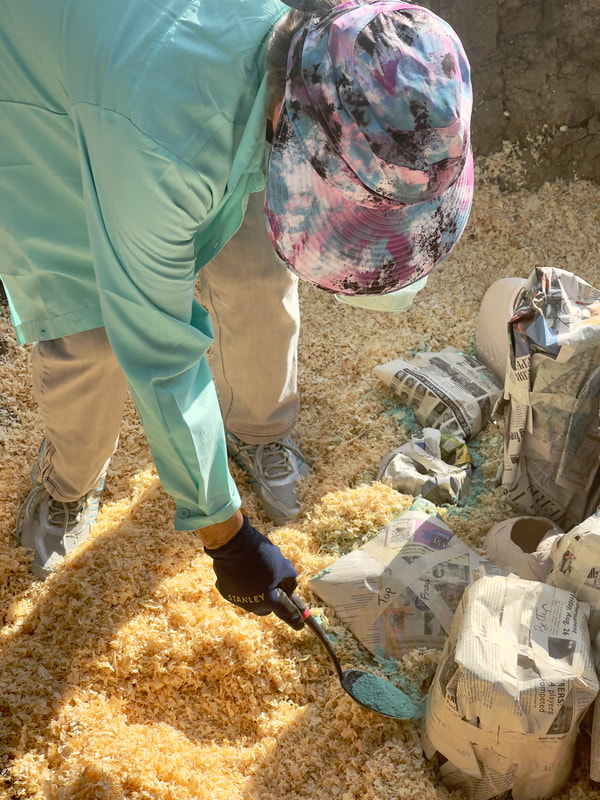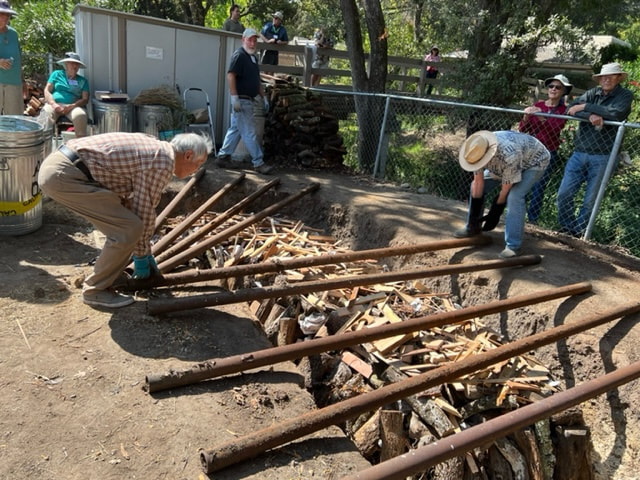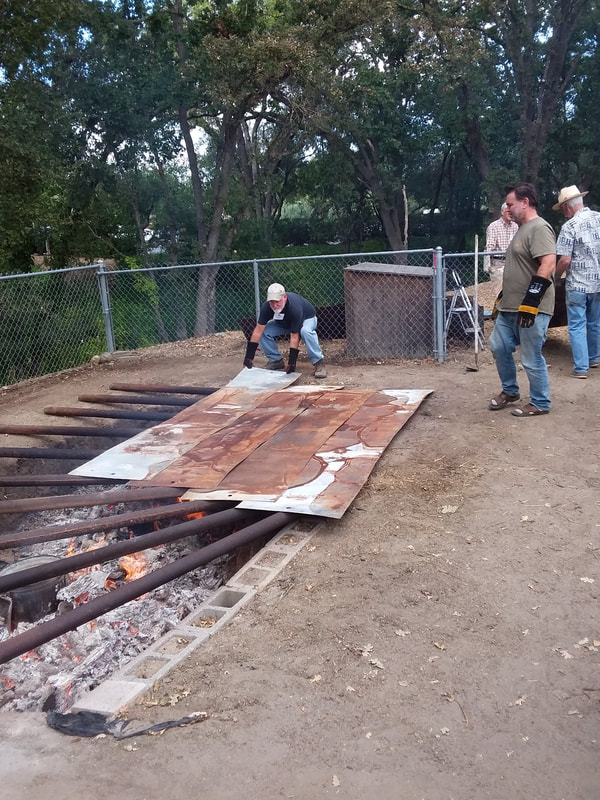First we bring out the prepared ceramic pieces that have been collected in the studio, placing them all around the pit (which has already been covered with a layer of wood shavings), after which they are very carefully loaded into the pit by the Pit Fire Master and one assistant.
Then all around the pieces salt & copper carbonate are sprinkled. Next everything is covered with dry seaweed, then dried cowpies, then small pieces of kindling wood. Scrunched up newspaper is tucked around the kindling and a layer of firewood is placed on top of the whole load. Finally more kindling is added over everything.
After that everybody climbs out of the pit and a set of heavy metal pipes are placed over the entire pit. The entire Pit Fire Team gathers around and a blessing is given prior to lighting the pit on fire.
The entire area surrounding the pit has been well watered down and the Pit Fire Safety team is in place, armed with a hose and 3 fire extinguishers, as seen in the first 2 photos below. (This is preventative - everything goes well and none of the fire extinguishers are necessary.)
Members of the Pit Fire Team squirt charcoal lighter fluid over the whole shebang and then they set the pit on fire using long torches made of rolled-up newspaper. As soon as it flames, all of the people move out of the fenced-in Pit Fire area and watch from the side.
After 2+ hours, when the flames are banked and the pit is simply smoldering, the pit is covered with long sheets of metal. This means that the pieces in the pit are in a reduction atmosphere, which produces many of the most beautiful effects as far as surface color and sheen. We then leave the pit for another day and half, letting everything settle and completely cool down.
The pit is totally cool in the morning when we uncover it: first the metal sheets, then the metal pipes are removed. The Pit Fire Master and one assistant once more climb into the pit, then carefully remove the fired pieces from the ashes. When that is done, another member of the Pit Fire Team rakes the remaining ashes for anything small which may have been left behind.
Other members of the Pit Fire Team place the fired ceramics on carts and wheel them to the back side of the Ceramic Studio. They are unloaded onto tables covered with newspaper.
Members claim their pieces and clean them. shaking off all of the ashes and other detritus. People wander around, admiring the results of the Pit Fire - both their own and those of everyone else. There are lots of beautiful pots, beads & sculptures to!
After a while, a potluck lunch is set out and everybody eats and celebrates a most successful Pit Fire! It's been quite a journey.. sigh.
[Note: most of the photos posted here are courtesy of CAC member Fred Surh; some are from other CAC members. Thanks to everyone who contributed!]

























































































 RSS Feed
RSS Feed